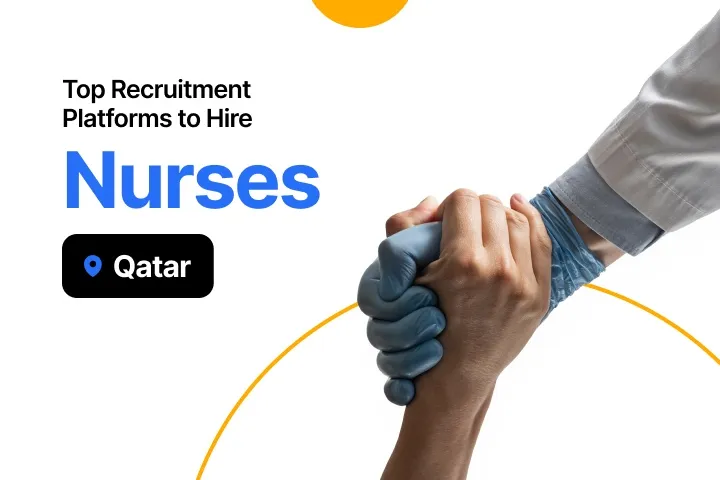What is an Offboarding process?
Offboarding refers to the process of departing with an employee, after their termination, retirement, or resignation. Like onboarding practices, offboarding practices help to transition employees – but this time, out of a company. 👋
Research shows that 71% of companies do not have a formal offboarding process, which is followed by 20% of them experiencing a data breach linked to previous employees.
Whether it’s paperwork or a goodbye party, the management must ensure a smooth offboarding process for a harmonious end to the employee’s contract. 🧘
Why is Offboarding important?
The offboarding process is a crucial company procedure. If implemented in a well-structured manner, it can prevent colossal mishaps regarding the company’s security, reputation, and functioning. It empowers teams to maintain high standards even after staff changes, safeguard vital business information while adhering to regulatory requirements, and provide valuable insights into the actual work experience within an organization. Here’s why a formally planned offboarding is so important.
Protects the Company from Security Risks. 🤖
Employees become increasingly linked with company information and network. Gradually and respectfully disengaging them from corporate operations avoids any future breaches or attacks. In some cases, employee access to organizational data is also illegal. Therefore, structured security measures are the crux of effective offboarding.
Determines the Future Relationship with the Employee. 🤝
Building and sustaining professional relationships is a key part of the career world. For whichever reason the employee exits, they must leave with a positive aftertaste. This is crucial for the company’s character. It’s considered a rule of thumb to maintain an amicable connection for good measure.
Additionally, this method can enable potential partnerships with past employees. Employees hold a great value that should not be discarded once they leave. Collaborations are a great way to boost brand recognition, and former employees aid that.
A Learning Point for Company Advancement. 🔬
A coordinated offboarding practice produces the opportunity for insightful and beneficial employee feedback. Converse with the leaving employee to discover their view of the company. Apply the information learned back into the organization to further improve the employee experience, for future members.
Ensures Meeting the Legal Requirements. ⚖️
Research the labor laws in your country before planning your offboarding course. For example, the Consolidated Omnibus Budget Reconciliation Act (COBRA) of the United States. This law requires companies to allow for the continuation of their healthcare plans. Ensure the protection and ethical exit of all your employees, whether it is voluntary or involuntary. Avoid any fines, lawsuits, or audits in the future through law compliance.
How to ensure a successful Offboarding Process
1. Planning for Offboarding 📝
Offboarding requires extensive planning to ensure a seamless process; so, it is best to draft a step-by-step plan for it.
To begin with, create a checklist of things that require your urgent attention and work. Each offboarding scenario varies and asks for a different procedure. Determine the reason for offboarding and work accordingly. If an employee retires, pensions and severance pays need to be decided on. If an employee posed a security issue, certain IT measures must be put into place.
Then, deduce which management needs to be involved and what paperwork must be drafted. Keeping other admin members engaged in the process means everyone can prepare effectively. It evenly distributes workload and warrants that everyone follows a set timeline of goals.
Many organizations utilize a knowledge base to facilitate the offboarding process. It helps with organizing the offboarding process. Every party involved has access to the information, guides, checklists, and practices which are uploaded to this knowledge bank.
Devise a substitution process before the employee departs. If a replacement is necessary, HR or Talent Acquisition must look into hiring apprentices or fresh grads immediately. Arrange a meeting for the former employee to meet with and guide the new hire regarding the role’s responsibilities.
Lastly, the management can plan for a farewell if appropriate. A small company hangout or get-together provides the opportunity for final goodbyes and appreciation for the departing employee. Overall, it is a genuine and heartfelt gesture that maintains good spirits between the company and the employee.
Once you have drafted the plan, all that’s left to do is implement it.
2. Communicating with the Employee(s) 🗣️
Converse with your employee to alert them of the offboarding procedure. Discuss the motive behind their termination and thank them for their dedication and service. Announce the exit publicly and as early as possible for maximum transparency and communication.
Take this time to finalize and complete any necessary paperwork. This includes non-disclosure agreements, legal agreements, or security disclosures. Negotiate terms and conditions of the severance pay or pension that your employee requires.
Hire a replacement beforehand and let your employee become a mentor for them before leaving. Kickstarting the knowledge transfer early will prevent a loss in productivity or disruption to the workflow. If a substitute is not arranged, expect a temporary decrease in motivation and efficiency. Share productivity tools with your coworkers, delegate responsibilities fairly, and be flexible with deadlines.
3. Security Measures to Protect Company Information 🔐
The most crucial part is to safeguard sensitive company information and assets. There are several reasons why an employee’s exit is dangerous to workplace security. Hence, security procedures are vital in the offboarding process.
Ask the employee to hand in all company belongings, especially those which give access to the workplace and company data. This includes badges, ID cards, keys, uniforms, credit cards, laptops, and documents.
Moreover, withdraw all access your employee has to online knowledge pools. This refers to social media accounts, company emails, and other databases. Change passwords or close their accounts. Using open source password managers makes it easier to rotate, log, and revoke credentials from a single, auditable vault. Of course, remember to give your employee a heads up so they take down any personal information.
4. Exit Interviews and Feedback 💻
To improve the employee experience and employee retention for the future, exit interviews are a must. This presents the opportunity to discuss your employee’s time at the company and gain insights. It is a learning occasion that presents possible ways to improve workplace culture and operations in the future.
Example questions can be:
1. What were your role responsibilities?
2. What were your expectations from this job and how were they met?
3. What did you enjoy most about the company processes?
4. What is your main reason (or reasons) for exiting the company?
5. What could the company have done to prevent your departure?
6. What improvements or changes would you like to see in the company’s future?
7. How was the workplace culture or environment during your time here?
8. Would you recommend this company to another worker or client?
Ask questions specific to the employee with a mediating presence from HR. Ask what they liked, disliked, and want to see from the company. Such feedback reveals valuable life lessons and data that an employer might miss out on.
5. Providing Assistance with Career Transition ✍️
Lastly, help your employee generate a career transition plan. This will signify the tasks the employee has to finish before or carry on after they leave. Assist them in delegating duties to the remaining coworkers. Create a timeline and assign objectives that must be met after the employee leaves.
You can also guide and encourage your employee to create a brilliant portfolio or design a resume that stands out to their next employer. Connect them with potential
hiring managers and help them with networking skills to impress their next employer.
Impact of a Poor Offboarding Process
A poor offboarding process can drastically lower employee efficiency and morale. Inadequately assigning the leftover responsibilities or not doing it proactively can overwhelm the employees.
They may feel confused, overworked, and unable to produce results. 😵
Furthermore, insufficient offboarding can lead to cyber-security threats and crimes. A soured former employee may be a risk of leaked or compromised company information. There can be data, confidentiality, or compliance breaches.
It can eventually lead to damage to company metrics, reputation, and more. 🤕
In addition, an unplanned or poorly structured offboarding can make the employee feel neglected and closed off. Never close the door on your employees, as they can later return for future collaborations.
Doing so corrupts the employee’s opinion and can risk legal action against the company. 😬
Frequently Asked Questions
Q) What should be discussed during an exit interview?
The goal of an exit interview is to discuss the reasons for the employee's departure. Additionally, you must prompt feedback on the company culture, management, and operations. Also, ask for suggestions for further improvement that the employee would like to see.
Q) Can offboarding be automated?
Yes, it can! Automated offboarding offers a seamless and dynamic process, specified for the exact employee who is leaving. Former candidates can be added to an online talent pool if they intend to return. Checklists and offboarding plans can be easily accessed and available. All data collected, such as feedback, can be stored in a database through automated exit interviews or surveys.
Even better, automated offboarding can make the entire procedure smoother through automated check-ins and reminders.
Q) What are the legal implications of poor offboarding practices?
Poor onboarding practices can lead to violations of labor laws, which can be subject to fines. Secondly, it can cause discrimination based on demographic characteristics such as age, gender, race, or disability. This can lead to potential lawsuits or legal consequences. Thirdly, it can lead to confidentiality breaches; if the employee compliance to non-disclosure agreements is not ensured. This can also cause cybersecurity issues or information leaks.
Q) Should offboarding be included in the employee handbook?
It is a great idea to include offboarding policies in the employee handbook. Clarifying the process sets clear expectations for procedural, legal, and regulatory requirements. It informs the employees and employees of the appropriate steps to prevent any misunderstanding or miscommunication.
Conclusion
A well-structured offboarding process is crucial to fairly and respectfully let go of a previously valued employee. It is key in preventing any potential legal action and cyber-security threats against the company. This is why you shouldn’t wait anymore and get to building your ideal offboarding process now!




